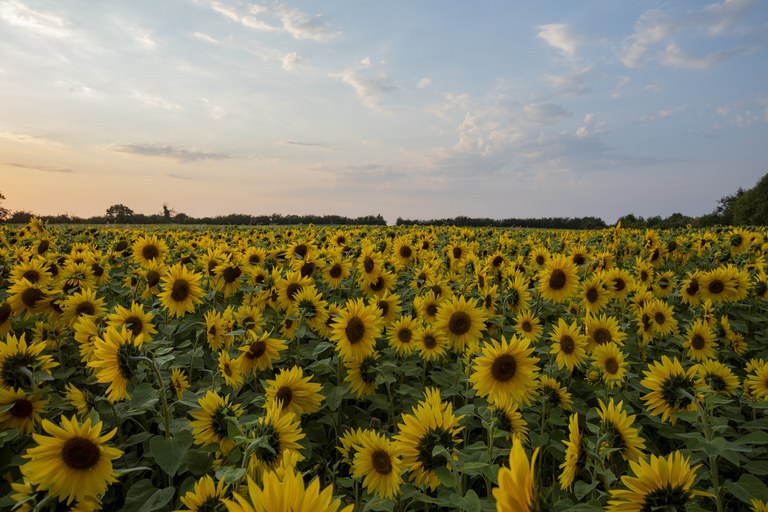AGRICULTURE
Published on 06/16/2021 12:46 PM
Agricultural zoning of climatic risk for sunflower is updated in Brazil
Sunflower is little influenced by latitude and altitude variations - Photo: Ministry of Agriculture, Livestock and Supply
The Ministry of Agriculture, Livestock and Supply (Mapa) published, this Wednesday (16), Ordinances 176 to 202, which update the Climatic Risk Agricultural Zoning (ZARC) for the cultivation of sunflower in Brazil. Zarc is a risk analysis tool derived from climate variability and which considers the characteristics of the crop and the soil.
“In the case of sunflower, we defined the areas and sowing periods for its cultivation with probabilities of yield losses of less than 20%, 30% and 40%, due to the occurrence of adverse weather events”, explained researcher José Renato Bouças Farias, from the Brazilian Agricultural Research Corporation (Embrapa) Soy.
To update the Zarc, researchers from Embrapa used new methodologies, expanding the sunflower climate risk zoning for all of Brazil. New risk factors were considered, associating water, thermal and phytosanitary issues.
“The new methodology for addressing the risks associated with water available in the soil was also introduced, making it ready to incorporate new concepts of soil management and production systems to be associated with climate risk in future zoning work”, added Farias .
According to the researcher, sunflower is little influenced by variations in latitude and altitude, has a tolerance to low temperatures and is relatively resistant to drought. Regarding the water needs for growing sunflowers, Farias states that the ideal would be around 500 to 700 mm of available water, well distributed throughout the cycle. "The most sensitive phases to water deficit occur during sowing and plant emergence and, mainly, from the beginning of the formation of the capitulum to the beginning of flowering, followed by the formation and filling of grains."
Zarc
The Climate Risk Agricultural Zoning aims to reduce risks related to climate problems and allows the producer to identify the best time to plant, taking into account the region of the country, the culture and the different types of soil. The agrometeorological model considers elements that directly influence the development of agricultural production, such as temperature, rainfall, relative humidity, occurrence of frost, water available in the soil, crop water demand and geographic elements (altitude, latitude and longitude).
Farmers who follow Zarc's recommendations are less subject to climatic risks and may still benefit from the Agricultural Activity Guarantee Program (Proagro) and the Rural Insurance Premium Subsidy Program (PSR). In addition, many financial agents only release rural credit for crops in zoned areas.
Right Planting Application
Rural producers and other agribusiness agents can access Zarc's official information through tablets and smartphones in a more practical way, facilitating guidance on the Federal Government's agricultural policy programs. The mobile app Zarc Plantio Certo, developed by Embrapa Informática Agropecuária (Campinas/SP), is available in app stores: iOS and Android.
Zarc results can also be consulted and downloaded through the “Risk Indication Panel” platform.
.

 Mr. Alessandro Jacob speaking about Brazilian Law on "International Bar Association" conference
Mr. Alessandro Jacob speaking about Brazilian Law on "International Bar Association" conference